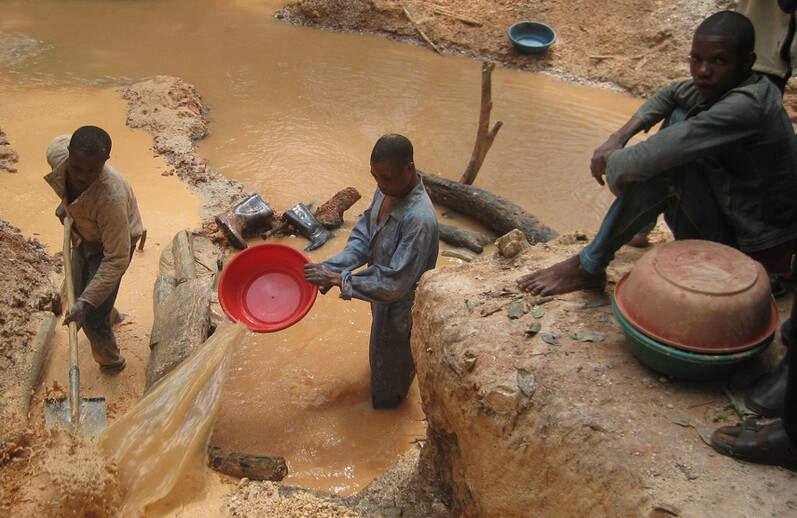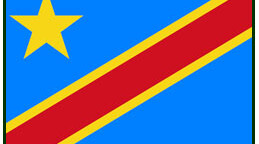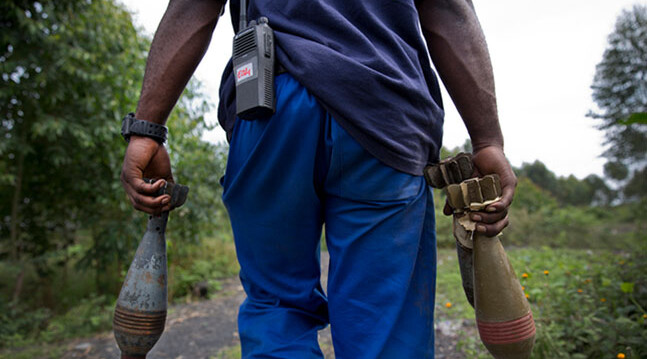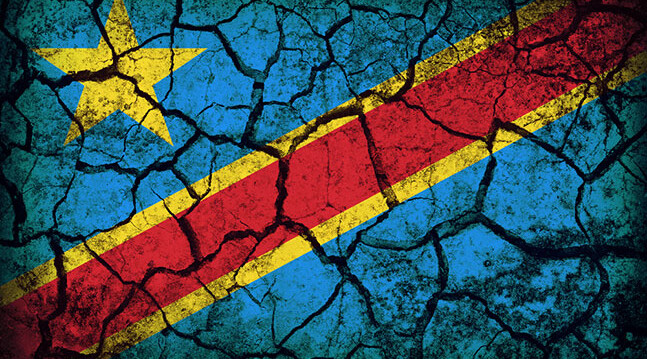In February 2017, President Donald Trump set about revealing the first drafts in a series of executive orders aimed at rolling back legislation brought in by the Obama administration only months before. Trump's first move proposed killing off elements of the Dodd-Frank Act which require energy and mineral resource companies to hold U.S. companies accountable for the use of conflict minerals in their products, as well as publicly disclosing payments to governments for extraction rights. To his voters, the move would repatriate energy sector jobs to America by making companies more competitive; to his detractors, the move would be a gift to violent groups and despots in developing regions mired by violence. As Sen. Sherrod Brown, a Democrat from Ohio, put it, in signing the measure Trump "gave a Valentine to kleptocrats from resource-rich countries and the companies that bankroll them under the table." Indeed, the decision to withdraw these measures drew criticism not only domestically but also from further afield, with a number of international bodies such as the African Association for the Defense of Human Rights (ASADHO) and Southern African Resource Watch (SARW) calling on President Trump not to reverse the progress achieved. That the proposal was written almost exclusively for the procurement of mined materials in the Democratic Republic of Congo is telling.
Since independence, the country has known no peaceful transition of power; instead it has been left to languish in poverty under decades of kleptocratic maladministration and a series of conflicts that have spilled more blood than any other since the Second World War. Out of this incessant violence emerged numerous armed groups desperate to profit from the country's instability. In North Kivu province alone, it is estimated that over 70 militant groups continue to operate, including the Democratic Forces for the Liberation of Rwanda (FDLR), which count a large number of Rwandan Hutu génocidaires amongst their ranks, as well as a litany of other rebel groups, including the Allied Democratic Forces (ADF) and Mayi Mayi1. While their presence in North Kivu, in close proximity to the border between Goma and Gesenyi, is due to the historical ethnic tensions that have festered there, it is not coincidental that the region also contains the country's richest deposits of a mineral-rich ore that has become the cornerstone of the modern technology industry. During the series of Congolese wars various armed groups directly and indirectly became involved in the production of minerals, as they sought to control the rich profits brought about by a booming electronics industry. At best, armed groups levied transport taxes on shipments of coltan to Rwanda, boosting their funding while robbing the country of the minerals' benefit; at worst, women were raped and children were enslaved, forced to work in dangerous mines. Indeed, Rwanda under Paul Kagame, who attributed Rwandan intervention during the Second Congo War to self-defense, funded some of these groups and profited hugely by looting millions of dollars in Congolese minerals. The introduction of Dodd-Frank, as well as falling commodity prices, broke this trend and while armed groups have diversified their income streams, the Act remains a key weapon in fighting one of the country's great injustices.
Tantalum, found in the region's rich veins of coltan ore from which it is extracted, is an essential element for the capacitors in modern electronics and is one of four key minerals that are collectively known as 3TG: tungsten, tantalum, tin, and gold. Together they form the target group of conflict minerals outlined in Section 1502 of the Dodd-Frank Act and their prevalence, and in most cases abundance, in the Congo highlights their crucial nature for the country's mining sector. In 2013/14, the total production of coltan in mines in the province of North Kivu jumped exponentially, rising more than 300 percent from 195.7 tonnes in 2013 to 798.5 tonnes in 2014. Furthermore, this coincided with a rise in the cost of coltan from $26/kg to over $34/kg. After a slow initial period in which President Kabila suspended mining activity in the east, Dodd-Frank oversaw significant change in the procurement of minerals. In 2016, 89 percent of the 232 mining operations in the east were declared 'green' and in essence conflict-free. In the wake of the congressional move to tighten regulation other international bodies introduced similar measures and frameworks to ensure due diligence in supply chains, including the guidelines set out by OECD, as well as European Union legislation that targeted conflict minerals.
However, while international legislation has been key in assisting the cleanup in Congolese extractive industries, neither the international community nor local government can sit back on their laurels, as corrupt practice and exploitation continues to pass through their ever-finer system of nets. Analysis of the production of one province alone, North Kivu, immediately highlights the issues of artisanal small-scale mining in the region. In 2016, North Kivu's mining industry claimed to have produced 1,121 tonnes of coltan, despite the United States Geological Survey (USGS) reporting that global production had amounted to 1,100 tonnes for the year. Inconsistencies aboundNorth Kivu sold its material for $34.7/kg while the United States bought it for $193/kg, according to the USGS. At face value this points to the difficulty in gathering accurate regional data; however, in a region blighted by conflict, corruption, and illegal smuggling, it may point to both an inflation of output statistics as well as an undervaluing of commodity prices to skim profits. Inaccuracies are inevitable, corruption difficult to prove, but in whatever manner these inconsistencies are interpreted, the case for the maintenance of Dodd-Frank rings true. Reporting practices must be improved, corruption weeded out.
Increased transparency on the supply-chain level is just one step in the move to ensure that Congolese volatility is not fueled by its minerals. Hard-nosed legislative measures are required to ensure that companies procure their concessions and extractive rights in a fair and legal manner. Section 1504 of the Dodd-Frank Act stipulates that U.S. companies must disclose any payments to foreign governments for concessions and extraction rights to natural resources. This has become integral in combating corruption on corporate and governmental levels. Such payments achieved recent notoriety with a corruption investigation, led by U.S. authorities, into Och-Ziff, a New York hedge fund, which led to Och-Ziff pleading guilty and paying fines. It alleged that Dan Gertler, one of Och-Ziff's partners referred to by the Security and Exchange Commission (SEC) as an "infamous Israeli businessman," had paid bribes to the Kabila government. Gertler is renowned for his close relationship with the Kabila family and their response to the allegationsthat "an attack on him is an attack on the Congo"2points to the pernicious nature of these payments. To this effect, repealing the provisions of Dodd-Frank would serve to destabilize the legislative equilibrium that is currently in place with other global legislation such as the EU's Accounting Directive which has prompted voluntary disclosures of payments from UK-based companies like Tullow Oil and Statoil.
Greater clarity as to the influx of foreign money into the country's mining sector should be greeted with open arms; yet greater clarity is still required on the state level and the manner in which mining operations are taxed and the benefits distributed. Unfortunately, this is territory where international legislation cannot tread. In 2016, the Congolese government passed a new law which rearranged and subdivided the country's 11 provinces into 26 new provincial designations. This has serious implications for tax revenues and how development monies are distributed. Under the new arrangement, revenues which would have benefited larger states like Katanga and Orientalehome to a significant number of the country's mineswould now be redistributed to smaller states like Haut-Uele and Lualaba. The National Resource Governance Institute (NRGI), an NGO that helps administrations realize the benefits of natural resources, highlighted that this change is important because of the fact that these new administrations now carry the "burden and opportunity of transforming natural resource revenues into sustainable development for their constituents"3 . For a country blighted by maladministration and corruption, a robust tax code is required for the natural resource sector in order to fully realize these benefits. Outdated and weak, such robustness has not been forthcoming. The Congolese mining code stipulates that 25 percent of all mining royalties collected by the Ministry of Finance be redistributed to the province where mining operations occur, with a further 15 percent diverted on a more granular basis to the town or municipality hosting the operations. However, the Extractive Industries Transparency Initiative (EITI) found that in 2014, Katanga province received only $12m out of its total entitlement of over $33m. Furthermore, the country's constitution also provides little clarity as to revenue distribution, settling on a two-category system based on the types of revenue generated, which confuses matters to the extent that in 2014 some regions received only 6 percent of the revenues due to them. Non-payment of royalties and the disappearance of large sums of money to private investors and political elitesaccording to Global Witness some $1.36bn disappeared between 2010 and 2012, more than twice the health and education budgetthreaten every Congolese person unable to assume a seat at the table. For a country where over 63 percent of the population lives on less than $2 a day4 such opacity isn't careless, it's catastrophic and even moderate reform would save lives. The nation's government is both inefficient and blinded by the self-interest of actors like Albert Yuma, chairman of state mining company Gécaminesa man Global Witness labeled "the kingpin." "Our investigation shows how Gécamines is hemorrhaging money in suspect transactionssometimes involving millions of dollars in cashwhile simultaneously failing to make any substantial contribution to the national treasury or invest in its own mining operations," writes Global Witness in a July 2017 report already cited above, titled Regime Cash Machine. Reform must come from wider consultation with mining bodies overseas in collaboration with civil society groups in the Congo in order to achieve an accountable and forward-looking extractive sector.
But while corporate greed and political avarice have flourished, one would be remiss in thinking that progress has bypassed the region completely. In its 2016 sustainability report, electronics giant Samsung reported on a number of initiatives that it had conceived in order to facilitate transparency in its supply chains as well as the communities in which they operate. They have initiated a "Conflict-free System" which bans the use of 3TG minerals that have been mined in an unethical manner, citing the Congo directly. In addition to requiring its suppliers to implement its ban, the group stipulates that supplier subcontractors must also implement corporate policy, including recommending smelters to push for certification under the Conflict-Free Smelter Program. In 2016, all 45 of their tantalum suppliers managed to do just that. After a damning report by Friends of the Earth in 2013 over allegations of gross violations in the mines of its Indonesian tin suppliers, Apple pledged to overhaul its procurement practicesa move that has drastically altered their corporate sustainability efforts. The iPhone manufacturer developed Material Risk Profiles for 44 elements in their products which would then receive heightened focus and resources, of which aluminum, tin, and cobalt were the first to be identified5. Furthermore, both companies have pledged to move to 'closed-loop' supply chainsi.e. where the resources used are renewable or recycled in perpetuityin a bid to wean the electronics industry off of its reliance on mining. Lofty claims indeed, but in a country where broken promises are the norm, not the exception, the progress being made should be met with applause and yet greater encouragement. As economies march towards sustainability, extractive industries, as well as the companies for whom these minerals form a crucial component, must ensure that they adapt. A case in point is the electrification of vehicles . As this gathers pace across the world, the procurement of cobalt in countries like the Congo will need to come under greater scrutiny. In 2017, mining behemoth Glencore is set to bring its Katanga cobalt operation back on lineanalysts expect it to amount to a 22 percent increase to global supply6and as the world's largest natural resources company the onus is on them to enforce stringent standards. Lithium-ion cells that form the backbone of electric vehicle production swallow up enormous amounts of cobalt and ensuring that supply chains remain open and transparent will be key to guaranteeing that the booming electric vehicle industry does not fall into the trap of hypocrisy. For is an electric vehicle really that 'green' if artisanal minerssometimes childrenface harsh labor conditions, safety abuses, and outright extortion from actors in the mining sector7? Managed carefully, the Congo could receive a massive windfall from its resource endowment; overseen poorly, the results could be disastrous. In an ironic twist, further problems are forecast for the Congo because of the decision by Apple, Samsung, and others to plan for 'closed-loop' supply chains, thus ending industry reliance on mining8. While this is a more sustainable use of materials, an end to mining with no industry to replace it could be potentially disastrous for a region where unemployment is the norm. Only through consultative dialoguean element rare in these partscan the Congo navigate its current economic and political turbulence and realize the potential that lies under its feet.
NOTES1 Stearns, Jason, Verweijen, Judith and Baaz, Maria Ericksson (2013) "The National Army and Armed Groups in Eastern Congo: Untangling the Gordian Knot of Insecurity." Rift Valley Institute. 2 See https://www.bloomberg.com/news/articles/2016-10-04/congo-backs-billionaire-gertler-after-u-s-och-ziff-allegations 3 See https://resourcegovernance.org/sites/default/files/documents/subnational-revenue-sharing-in-the-drc-after-decoupage-four-recommendations-for-better-governance.pdf 4 See 4 http://www.worldbank.org/en/country/drc/overview 5 See https://images.apple.com/in/environment/pdf/Apple_Environmental_Responsibility_Report_2017.pdf 6 See https://www.ft.com/content/bc8dc13c-07db-11e7-97d1-5e720a26771b 7 See https://www.amnesty.org/en/documents/afr62/3183/2016/en/ 8 See https://images.apple.com/in/environment/pdf/Apple_Environmental_Responsibility_Report_2017.pdf p>




